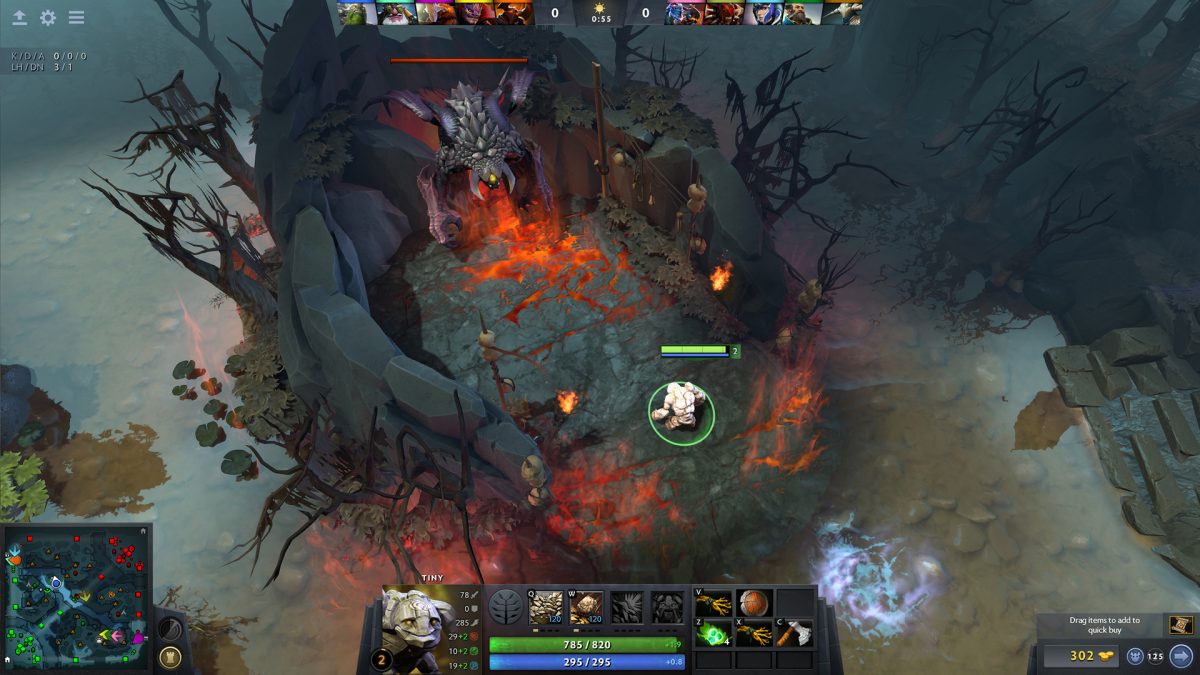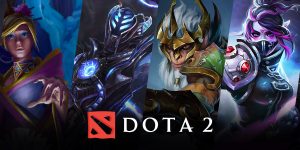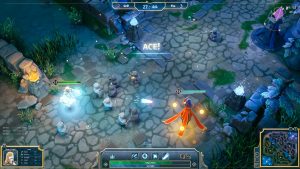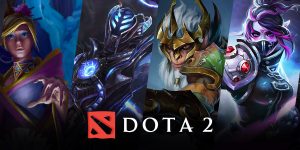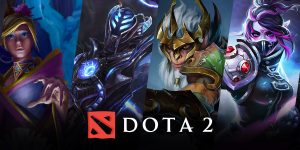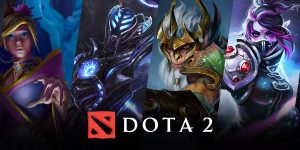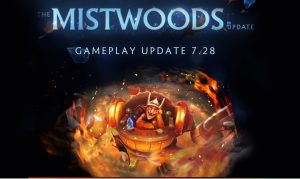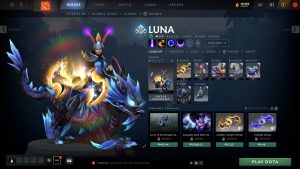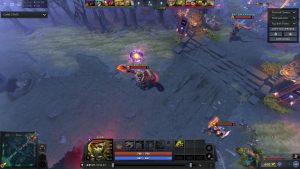MOBA games are now a staple in multiplayer gaming, and it’s only getting bigger. With the inclusion of mobile MOBAs that allow players to take the experience from the comfort of their homes and into the outside, the popularity of MOBAs is at an all-time high. However, we’re not here to talk about that. We’re here to talk about two of the biggest MOBAs in the market: Dota 2 and League of Legends. Let’s compare their various mechanics and quirks and decide which one’s for you. Dota 2 vs LOL: which MOBA is for you?
But before we tackle the Dota 2 vs LOL debate, we need to know what in the world is a MOBA.
What Are MOBA Games?
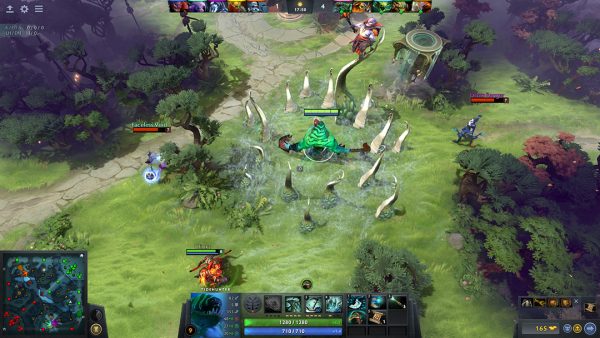

Multiplayer online battle arenas (MOBA) are a subgenre of strategy games. This genre focuses on a group of players controlling a character that has a set of unique abilities and skills. They can improve throughout the length of the game as well as contribute to their team’s overall strategy. The ultimate objective of the game is for one of the teams to destroy their opponents’ main structure, which is found on the opposite corners of the battlefield. However, there are MOBA games that can have other victory conditions.
These objectives can range from defeating all the players on the opposing team, capturing the flag, and other game modes. Players are also assisted by AI-controlled units that periodically spawn in groups, commonly known to gamers as creeps. These units gradually move forward along set pathways towards the enemy base. Said base is heavily guarded by defensive structures on each of the lanes. The genre is seen as a combination of RTS, RPG, and action games.
If you’re looking for more Dota 2-related guides, read our review of Dota Plus and our guide to recalibrating your Dota 2 MMR. We also have a list of the best multiplayer online games that you can play today.
The Start of an Era
The first widely accepted game (or more specifically, mod) in the genre was known as Aeon of Strife (AoS). It is fan-made custom game map created for StarCraft and StarCraft: Brood War where four allied players control one powerful unit and fight against a stronger AI opponent, aided by weaker AI-controlled units. However, Defense of the Ancients (DotA), the real originator of the genre, was created back in 2003 by the Warcraft III modding community.
With a map that took inspiration from AoS, DotA was the birthplace and the first major MOBA title. It is one of the first esports that offers prize money for competitors. The game mod gave birth to three spiritual successors, League of Legends, Heroes of Newerth, and Dota 2. There are also various spinoffs like SMITE, Heroes of the Storm, and Mobile Legends: Bang Bang among others.
Dota 2 vs LOL: Similarities Between Both MOBAs
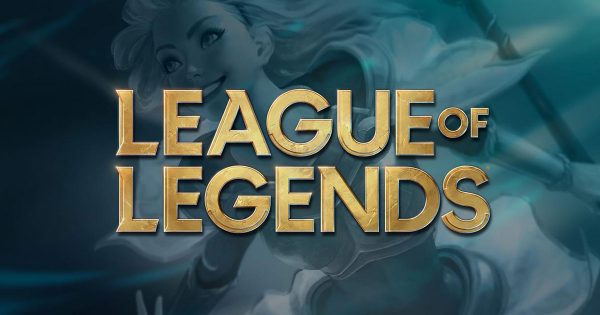

We’re going to be discussing Dota 2 and League of Legends in depth, as both of these MOBA games are the biggest and most prevalent titles in the genre. We’re going to talk about the various similarities and differences that abound both games in the genre. This will help you pick a side in the Dota 2 vs LOL debate.
Gameplay
Now, let’s talk about the gameplay these two MOBA juggernauts have. It’s interesting to closely compare the two because they still have some unique mechanics and principles that spice up their games even if they are both MOBA games.
Basic Principles
A match in Dota 2 and League of Legends begins with two opposing teams of five players. The players in each team must work together to destroy their enemy’s base before their opponents get to theirs first. Usually, both teams have their main structures that are found at the opposite corners of the game map. Destroying other structures that are inside the opponent’s base may provide your team with benefits, making that another thing players should consider. Do note that the players aren’t the only defense the base has: defensive structures known as towers are located in the lanes. Their aim is to attack opposing creeps and players to prevent them from destroying the base.
Dota 2 and League of Legends games are typically played on a map that’s shown from an isometric perspective. Although this MOBA design that the original DotA popularized, there have been titles that deviated from the Warcraft III mod’s usual isometric view. Examples of this are first-person shooters like Paladins and the third-person SMITE. Players can see the game’s battlefield by the mini-map that’s usually located on the bottom right of the screen.
Both Dota 2 and League of Legends have three lanes in their main maps, more commonly known as the top, middle, and bottom lanes. Between the lanes is an area that’s usually called the jungle. The jungle is a place where players can find neutral monsters that appear in various locations of the game map known to gamers as camps. Players kill these neutral creeps to gain gold, EXP, and other beneficial buffs.
Team Composition
As mentioned before, a player has control over a single powerful in-game unit called a hero for Dota 2 or champion for League of Legends. These powerful units have a diverse set of unique abilities tailor-made for the specific character. These units get gold and EXP after killing creeps and heroes/champions controlled by the opposing team. In a lot of MOBAs, playable characters have their own assigned classes that dictate their roles in the game. These can range from your typical tanks (high HP and Armor, slow movement and attack speed), supports (Gives various buffs or healing), mages (deals damage through spells and abilities), and carries (initially weak early game, but will become obscenely strong in the late game with enough resources).
However, that’s usually where the similarities end for both Dota 2 and League. In Dota 2, the roles are divided into the Mid, Carry, Offlane, Soft Support, and Hard Support, all of which have their roles to play in a match of Dota 2. Meanwhile, League of Legends also follows this type of team composition, except for the fact that they replaced the Offlane with a Jungler, a third carry of sorts that usually spends its time on the game’s jungle area to farm for exp and gold for items while executing ganks on one of the three lanes.
Medal Ranking System
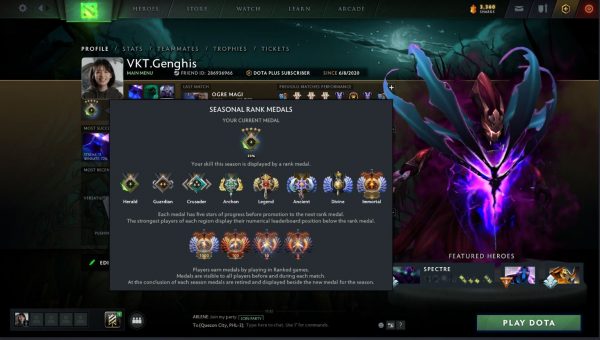

Most multiplayer games today have a ranking system that separates the high-skilled players from the newer or less skilled ones, and MOBAs are no exception to this. In their case, they have the MMR Medal Ranking System.
In the case of Dota 2, they have their MMR, Ranked Medals, and Regional Leaderboards. League of Legends also has Ranked Medals, but they call their MMR as ELO. However, both are similar enough that there’s nothing that we can discuss between them.
Other Similarities
As for other similarities, there’s the fact that you can stack similar effects to get a bigger buff. This is more commonly known as Item Passive/Buff Stacking and is pretty much a necessity if players want to get stronger.
And then there’s the emphasis on jungling.
Now, this wasn’t as big of a deal on Dota 2 back in the day. However, with the addition of Neutral Items, players of Dota 2 now go to the jungle to hunt down specific items for their team’s use. Couple that with the addition of a few items that appear in later stages of the game like Aghanim’s Blessing and Refresher Shard. Dota 2 players are now incentivized to go to the jungle, and that includes the support players. Meanwhile, on League of Legends, the jungle has always been a point of great emphasis due to the various temporary buffs that some neutral creeps provide. Couple that with the Elemental Drakes and the ever-present Baron Nashor, and players are inclined to take these objectives for the good of the team.
There are some differences between Dota 2 and League of Legends when it comes to this, though. For one, Dota 2 also has aura buffing with the. Meanwhile, League’s auras are a bit lacking as almost all the skills that the Champions have been active. There might be other similarities, but that’s all we’re going to talk about for now.
Dota 2 vs LOL: Differences Between Both MOBAs
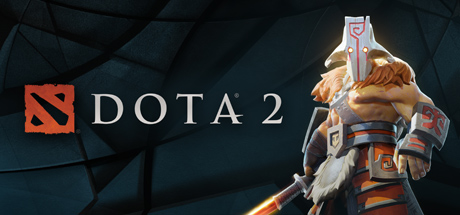

Of course, the Dota 2 vs LOL debate will require us to take a look at their differences. There are a lot of things that make each game unique from the other.
Learning Curve
Let’s talk about the learning curve between the two games. After all, this is a big factor in picking a side in the Dota 2 vs LOL debate.
When it comes to the myriad of mechanics that either game has, it’s pretty much a no contest that Dota 2 is the harder mechanical game of the two. The difficulty spike is due to concepts like creep stacking, creep blocking, denies, pushing, pulling, and equilibrium. These things aren’t the only things players must note because a lot more concepts are required to play Dota 2 at a competent level.
However, the game does allow you to play Dota 2 while by yourself through the use of custom games to practice your mechanics. And we haven’t even gotten to disjointing yet!
On the other hand, League of Legends has easier mechanics to appeal to more gamers. Most of the mechanics that the original Defense of the Ancients Warcraft mod had was done away with in favor of streamlining the gameplay and experience. This is a great decision from a marketing standpoint, but the sheer width and breadth of the Champions that are available for users makes things interesting. Plus, there’s the fact that power creep is a thing in League of Legends. This happens with newer champions having better skills and scaling when compared to Year 1 Champions. This makes older champions obsolete in comparison.
Though Riot Games have indeed made the effort to revamp older Champions by changing up their kits and skills, it’s still a big problem for both the casual and competitive scenes.
Gameplay Differences
Let’s talk about the various gameplay differences that Dota 2 and League of Legends have.
We already touched on the various mechanics that Dota 2 has in its sleeve on the learning difficulty. However, let’s elaborate on some of these mechanics more. An example of this would be disjointing. There are also denials and various player roles in Dota 2. Afterwards, we’ll talk about the emphasis on jungling in League of Legends, the various powerful neutral creeps in Dota 2 and League, neutral items, the mechanical skills needed for some heroes/champions, and whether or not you should play either Dota 2 or League of Legends.
So buckle up, this is gonna be a bumpy ride.
Disjointing
Disjointing is an act of timing. It takes skill to accomplish and a real crowd pleaser when done correctly. As for what it is?
Players have to time the blink/invisibility effect they use to nullify a spell or attack that targets the hero that they’re using in order to disjoint their hero. While some people will say that this is game-breaking, it’s not in the slightest as the skill requires a lot of practice to pull off at a competent level. It’s best to practice on Dota 2’s AI opponents before trying this out in a real match where your MMR is at stake.
Denying Towers and Creeps
Denies are practically essential tools for a Dota player nowadays that it’s a bit weird not seeing it in other MOBAs. The act of denying a tower or creep is when a player decides that a tower or creep’s HP is already too low and proceeds to attack it to “deny” the enemy precious gold and EXP that it would have gotten with the last hit. This is a pretty strategic thing to do and is one of the things that adds nuance to the game. Players need to take into account whether it’s worth it to deny their towers so that the enemy doesn’t get gold or they want to leave said tower longer to keep their side of the map safe. And that’s just on the towers; creep score is a whole different story.
Player Roles
Dota 2 and League of Legends have similar enough player roles. However, the difference between the two is how flexible their characters are in the roles that they are placed in. An example of this would be OG’s Carry Io. Io isn’t a hero that you would put in a hard carry role; it’s the quintessential Support Hero, after all. But in TI9, Ana showed the world that Io is indeed a formidable carry that can deal stupid amounts of punishment to its enemies, demolishing a few of the bigger teams in the tournament while doing so.
Meanwhile, on the opposite end of the spectrum, League of Legends player roles are practically set in stone the moment they pick their champions. This is because the champions are rigid in the abilities they have and the effects of said abilities. There’s almost no room to think and be creative outside the box game creators Riot Games have set on them. You follow the item builds, you cast your abilities, and that’s about as much creativity as you can pull off.
Team Combos
As for the team combos that players can do, there’s a bit more complexity when it comes to these things in Dota 2 compared to League of Legends.
As for why that’s the case, it’s because Dota 2’s heroes are made with the philosophy of “If everyone’s OP, no one is.” Everyone has a skill that can turn the tide of battle; everyone can contribute if they know how to do so. If your skills are done with their cooldowns, you can use them in a team fight. If your ultimates are ready, then you best prepare to use them when the time comes. Maybe Roshan is alive and your Monkey King has his Wukong’s Command for the inevitable fight against the enemy team? Maybe the Tidehunter on your team has his Ravage ready? Perhaps the enemy Legion Commander manages to use her Duel on the Monkey King before he uses his ultimate?
Dota 2’s spell and Hero combinations are varied and very complex with what seems to be a near-infinite amount of team compositions despite the fact that Dota 2 has fewer Heroes to League of Legend’s champion pool.
And that’s because on League, quite a few of their original champions got affected by the power creep. With each new champion they release, the power creep grows bigger and bigger. The newer champions have more variety when it comes to their abilities when compared to older champions in the same role. It’s something that Riot Games tried to fix with reworking older champions, but it’s still a tough obstacle for the game and for players who are specializing with specific champions throughout their time in the game.
It does make the game fun, though.
Baron Nashor
The Baron Nashor is League’s most powerful and most dangerous neutral creep, with some pretty disgusting AOE abilities and incredibly hard-hitting attacks. Fighting him solo early on in the game is guaranteed to be a fool’s errand. Even defeating him with your whole team behind you is a challenge.
However, the rewards are well worth the wallop that players will get while beating him: it gives all living players in the team that kills him increased attack and ability power, speeds up their Recall ability’s channeling time, and gives them the ability to empower allied minions, increasing their damage, range, movement speed, and attack speed.
You only go for Baron if you’re itching for a team push on the enemy base, as it’s a high-risk, high-reward move. The enemy team will figure out that you’re attacking Baron, which may cause them to either stop you or steal the kill for their own.
The other things that make Baron different from Roshan are the fact that Baron doesn’t spawn at the beginning of the game and that he’s a stationary target. He cannot move outside his pit and will just turn around to hit the champions that are attempting to kill him. He always spawns after 20 minutes of game time has passed, with his reappearances happening after every six minutes. This makes him a priority target for both teams and an objective that’s purpose-made to end the game.
Rift Herald
The Rift Herald is a powerful Neutral Creep that spawns in the Baron Pit before Baron Nashor. It can spawn twice in one game. But for this to happen, it must be killed before the game timer hits 13:45. Killing the Rift Herald gives the team that kills it the Eye of the Herald, an item which grants Empowered Recall to the Champion that holds it and the ability to summon the Rift Herald to push lanes and destroy enemy towers.
Elemental Drakes
The Elemental Drakes are found in the Dragon Pit located in between the mid and bottom lanes. Previously, the game only has a single Dragon there that gives out gold and EXP. However, a recent game patch now gives randomized Elemental Drakes that will spawn at random five minutes into a match and every five minutes afterward when the Elemental Drake in question dies. Each Elemental Drake has a buff that increases in power every time you kill an Elemental Drake of the same element. And killing the 4th Elemental Drake of the same type gives an additional buff called the Dragon Soul. The four Elemental Drakes and the buffs they provide are the following:
Infernal
The buff is called Infernal Might and grants the team that kills the Drake an increase in both attack damage and ability power. This buff will increase from a minimum of 4% to a maximum of 16% every time the team in question kills an Infernal Drake. Getting the Infernal Dragon Soul gives the team increased splash damage on their auto-attacks and abilities.
Cloud
Cloud Drakes give the Cloudbringer’s Grace, giving a pretty hefty cooldown reduction buff on all skills that the team has. From a minimum of 10% to a maximum of 40% every time the team kills a Cloud Drake. Getting the Cloud Dragon Soul gives the team a 10% movement speed that increases to 50% after they cast their ultimate ability for six seconds.
Mountain
Mountain Drakes give the Mountainous Vigor buff. Said buff grants a 6/12/18/24% armor and magic resistance increase on the team that kills the Mountain Drake. Getting the Mountain Dragon Soul gives the whole team a shield that will appear after they haven’t taken any damage in five seconds. Said shield has 200HP (+18% of the Champion’s Attack Damage, 13.5% of the Champion’s Ability Power, and 13.5% of the Champion’s HP).
Ocean
Last but not the least, the Ocean Drake gives the Oceanic Will Buff. This gives the team that kills the Ocean Drake the ability to restore 2.5/5/7.5/10% of their missing HP every 5 seconds. Getting the Ocean Dragon Soul gives a 160 (+36% Bonus Attack Damage, 22.5% Ability Power, and 9% Bonus Health) lifesteal and restores 80 (+3.5% maximum Mana) Mana over 4 seconds.
Last but not the least, there is the Elder Dragon. This bad boy spawns after any of the two teams manage to kill their fourth Elemental Drake of the same Element and six minutes after the death of a Drake. It has a more robust HP, deals more damage, and gives a two-and-a-half minute buff called the Aspect of the Dragon. This buff gives Champions the ability to damage enemies for 75 – 225 over 2.5 seconds that increases in power if they’re below 20% of their max HP.
Roshan, the Immortal
Roshan, like the Baron, is Dota 2’s most powerful neutral creep, with big HP and armor. He’s hard-hitting in the early game but will hit like a potato when the late game comes. He can block a spell every 15 seconds and can stun enemies. Moreover, he has an AOE slam attack and gets more stats the longer the game goes on. Roshan is an incredibly tanky and nearly impossible monster to beat (Unless you’re Ursa with Lifesteal and his thirrd Skill at max level), but the rewards you get for beating him makes it all worth it.
After a team kills him, all the Heroes on that team will obtain 225–325 gold and 400 Experience points. This is already a pretty good sum on Dota 2, but not enough to encourage players to kill him right away. No, that distinction goes to the items the players get when you kill him. We’ll talk about all of them below.
The Aegis of the Immortal
One of the items Roshan drops after killing him is the Aegis of the Immortal. It’s a one-time use Item Drop that gives the holder an extra life. It revives the hero a few seconds after they die with full health and mana. The item will be reclaimed after five minutes passed, though, so players need to make the most of the item while they have it. Otherwise, they’re gonna get in trouble by diving in when it’s time for the Aegis to be reclaimed.
Cheese
Players will also get the Cheese item alongside the Aegis the second time they kill him. The Cheese is simple enough: it’s a consumable item that gives the player that uses it 2500 HP and 1500 Mana. It can save someone’s life and possibly turn the tide of the fight if used at the right place and time. You can also stack these if you’re so willing, and have a lot of Cheese to consume for healing.
Refresher Shard and Aghanim’s Blessing
When Roshan dies for the third time, he either drops an Aghanim’s Blessing or a Refresher Shard alongside both the Cheese and Aegis. This will continue every time a team kills Roshan. Refresher Shard grants the one that uses it the ability to reset the cooldowns of all items and abilities that the hero has. However, unlike the Refresher Orb, the Shard will be consumed after use.
Meanwhile, Aghanim’s Blessing is a recipe that fuses with the Aghanim’s Scepter item.
The Aghanim’s Scepter gives +10 to all three main stats that a hero has (Strength, Agility, and Intelligence). However, it’s more pertinent buff is that it improves certain abilities for almost all of the heroes in Dota 2. Aghanim’s Blessing makes it that the item will instead be turned into a permanent buff on the hero. They’ll lose the stat increase, but they get an item slot back. However, the ability improvement will become permanent.
Neutral Items for Dota 2
Neutral items are a new thing that came out for Dota 2, and getting them has become an essential part of the game.
These are items that are dropped by neutral creeps after a hero kills them. They’re not purchasable or sold at any of the shops on the map but can be shared by the whole team. And unlike normal items, neutral items can’t be destroyed. All of the players may only equip and use one neutral item that’s placed on a dedicated item slot. Any unused neutral items can be placed in a dedicated stash.
Both teams have a dedicated stash for neutral items that’s inside their fountain areas. These stashes can be accessed by all players in the team. All neutral items can be stashed by simply dropping them inside the fountain area or by teleporting said item into the stash with a right-click on the item. One thing to take note, though, is that a team’s neutral item can be moved to their dedicated stash, unlike the regular stash. Yes, this applies even if you’re on the other side of the river. Don’t let the flashy animation fool you, either, because the teleport happens in an instant.
A final thing to note is that the neutral stash can store up to four items for each tier. Also, only items located and found by the team can be stored inside their stash. You can steal neutral items from the enemy team, however. They cannot be kept in your stash, and right-clicking them merely teleports the item to the fountain instead.
We can talk about the neutral items and their effects all day, but we won’t be able to list them all.
Dota 2 VS LOL: Factors To Help You Decide
Mechanical Skill Requirements
As for how much mechanical skill is involved in either game, it’s a bit of a mixed bag. Knowing the required amount of mechanical skills is a good way to answer the Dota 2 VS LOL debate.
See, both games have Champions and Heroes that need more mechanical skills when compared to the other heroes. An example from both games would be Invoker, Meepo, and Earth Spirit For Dota 2. Then, Lee Sin, Azir, and Aurelion Sol for League of Legends. There are a metric ton more characters that require incredible mechanical skill to play. Plus, we haven’t even talked about the mechanics that are in the game yet.
For one, a lot of the common mechanical skills that are in all MOBAs apply to both LOLand Dota 2. You still need good map awareness and good communication with your teammates. Also, skills last hitting enemy and jungle creeps, managing mana, and etc. are important as well. In Dota 2 you need to keep in mind when the runes, jungle camps, and Roshan respawn. For LOL, the effects of the various Elemental Drakes and how these can affect a team’s playstyles. Plus, the respawn time of the Dragons, Baron and Jungle Buff Camps.
In conclusion, both games have their versions and caps when it comes to their mechanical skill requirements. It’s really up to the players to learn their ups and downs so that they can play to the best that they can play.
Role Difficulty or Learning
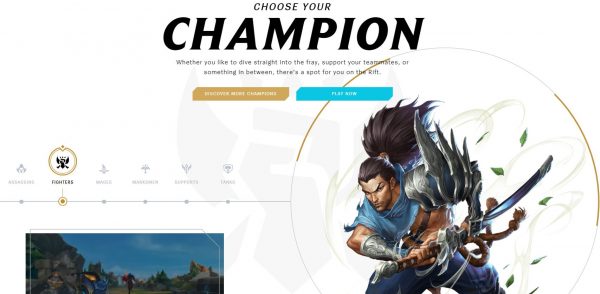

As for learning the various roles of the games, there’s a bit of a zigzag between Dota 2 and League of Legends. This is partly because of the different things that both games ask you to do.
For one, most carry champions in League are squishy types that prioritize other squishy champions. Also, there’s a bit of linearity to the game’s team fights every once in a while. Also, Riot Games releases new champions almost every year.
Dota 2, meanwhile, is harder to master due to its complexity. There are a whole lot of things to consider. You also need to dedicate yourself to the role that you’re playing as. However, the beauty of this is that you have the potential to do nearly anything once you master the role.
Learning a specific role that suits your play style can help you pick a side on the Dota 2 vs LOL debate.
How to Know What MOBA is For You?
Now, for the final verdict in the Dota 2 vs LOL debate.
If you want a more mainstream MOBA experience with a low barrier of entry to play, then go for League of Legends.
However, if you’re someone that wants to challenge themselves from the start, then Dota 2 is your game.
That concludes our journey into the Dota 2 vs LOL debate. We hope you found the MOBA of your dreams after reading through this article.









